
Issue #: 151
Published: January / February 2017
- Price per issue - digital : 5.40€Digital magazine
- Price per issue - print : 6.20€Print magazine
- Access to Multihulls World digital archives Digital archives
Unlike monohulled yachts, which have been sailing the seas for over a hundred years, it’s been barely a quarter of a century since production multihulls have started to colonize the waters. The exterior shape of the most recent cruising catamarans denotes an evolution in demand applied to a new style of sailing. So what’s happened these past 25 years of production? How have the designers and shipyards adapted to the changing clientele? Let’s back up a little to have a look and try and figure it out.
By the early 1990s, the limits of safety and seaworthiness were well-understood for fiberglass monohulls, to the point that development was tending more toward sophistication, but the fact they were running out of steam indicated change on the horizon. One of the strongest responses came in the form of the cruising catamaran, which offered significantly more volume, and the advantage of eradicating heeling, evoking landlubber-style comfort, which has not been lost on a good number of sailors. But in smaller sizes, there were still a few question marks, notably concerning safety. So efforts were initially put into building boats for sailing safely and taking on the elements, because the increase in comfort would naturally follow the increase in living space, the view outside and the stability. And so the specifications put to VPLP for the Lagoon 55 in 1987, can be summed up in three points: elegant like a monohull, habitable and easy to make it go fast. These formed the basis for production multihulls, though there was no feedback on the part of potential buyers, who, due to having not enough experience, had to be satisfied with what was on offer. This was already a lot, compared with a monohull.
There’s no point in saying how much this has changed and that the aforementioned specifications for a current 52 footer are significantly higher, because listening to client wishes and reviewing their way of sailing have constituted the biggest evolution, according to naval architect Olivier Racoupeau. And difficult to satisfy everyone, he says, as there were two categories clearly defined at the time: racing boats or cruising boats. But 25 years later, the market is divided into a multitude of available products. You’ve only got to look at this year’s Buyer’s Guide to see this. There’s something for every taste and every desire, from the smallest to the largest, fast or comfortable, or both, sophisticated or simple, for blue water cruising or just for the summer, or for racing, or even exploration.
While by the late 80s there were barely 20 models representing the entire world production, of which 80% were French, there are more than a hundred today, of every type. And so every type of sailor can find what they’re looking for, be it on two or three hulls. But by a long way, the 40 -55 foot cruising catamaran is the equivalent of the four-door family sedan, that is to say is the biggest market sector. It’s in this most representative size that we’ll concentrate our investigations, and our comparisons between veterans and contemporary boats will look, this time, at the external structure before investigating layouts and interiors in a forthcoming edition.
There’s 25 years between these two Outremer catamarans and 25cm difference in freeboard. The older one is closely followed by the new one. The company really knows how to maintain and even improve performance while creating a contemporary design
Undoubtedly the biggest evolution has been the way people have gotten into sailing over time, continually seeking greater comfort and ease of use, to the point of ignoring the shape of modern multihulls, and this is due to several determining factors. First off, the popularity of cruising has favored the development of charter-management, itself boosted by tax incentive schemes. Charter fleets have allowed more people, some with no experience, to cruise with or without a skipper in paradise destinations, or simply enjoy seaside vacations. These have been their big motivation, the experience fulfilling their desires. And also the fantastic technical progress initiated by offshore racing, even if not all the innovations are transferable to cruising boats, says Marc Van Peteghem. Also, industrial advances that have allowed naval architects and boat builders to overcome safety constraints and to experience conceptual freedom to focus more on the enjoyment of living on board and the ease of function of the boat. Finally, the growth of yachting at the beginning of the twenty-first century has given rise to pioneering custom catamarans, as we are reminded by Jean-Jacques Coste, in the areas of style and design, with large bathing platforms aft, dining areas with a cockpit bar, both forward and aft, flybridges and sunbathing areas on every level without even mentioning ergonomics and hardware. As has happened in the house-building or automobile sectors, such features have certainly considerably influenced users. And so these are attributes which couldn’t simply remain just for the privileged
The difference in hull width and the increase in deck area between this Marquises 56 from 1990 and the all-new Ipanema 58 are plain to see
The difference in hull width and the increase in deck area between this Marquises 56 from 1990 and the all-new Ipanema 58 are plain to see
It goes without saying that change is important, boats are no more than something whose only purpose is to sail the seas in safety or quickly but which are above all destined to lead their passengers from one nice location to another, on the water of course, and at the same time be a mobile vacation home. And the boatbuilders’ response has been progressive, so as not to upset seafaring opinion. So beginning with the outline of a Marquises 56 from the early nineties, which visually brought together aerodynamics and hydrodynamics, a first step had been taken with elevating coachroofs and vertical hatches as well as slight increases in freeboard in the late nineties and early 2000s, which critics of the day felt to be appropriate. This trend accelerated toward the late 2000s to the point that it appeared the coachroof had been taking Viagra, with the windows growing accordingly, and opening more and more, notably into the cockpit.
And cockpits, since we’re talking about them, have seen their area increase hugely, and now we see the appearance of the mini sunbathing area forward. In between, the nacelle has been lengthened, by a half, now making up over two-thirds of the length overall. The hulls have gotten fatter, become taller and much wider, seeing the same size increases as the nacelles, going from making up a quarter of the beam, to now being one third. For the 40 footers to absorb this increase in hull size, the beam has increased by around 12%, making them almost a meter wider. Also, their shape has evolved, with wider stern sections guaranteeing bathing steps worthy of royalty.
Coming to the end of the decade, the bimini was transformed into a proper rigid cover, even integrating the mainsheet traveler and sometimes a raised helm station. From 2010, things became more emphasized: the bimini became an integral part of the roof, which harmoniously covered the salon and the cockpit in one go. So a new factor had systematically come to feature in the concept: professional design had become indispensable. Effectively to cater for this extra corpulence, the yards had to call on teams of naval architects, designers, ergonomics experts and stylists who work closely together to manage the calories continually being injected.
The addition of extra relaxation spaces characterizes new “family” catamarans. Ten people can now sail in the same comfort that five would have had previously
The addition of extra relaxation spaces characterizes new “family” catamarans. Ten people can now sail in the same comfort that five would have had previously
Since we never stop such a good thing, the tops of the 40 footers now sport small flybridges with sunbeds, while big flybridges, fully equipped with seating, mini-bars, helm stations and huge sunbathing areas previously only seen on superyachts, are now becoming common on the over-50’ production catamarans. For maximum domestic use, we have seen the arrival of forward cockpits, with bench seating for having aperitifs. The latest development to date is that the trampoline has been replaced by the nacelle, now covering the whole length of the boat. You can dine there or loll about on almost 16m² of sunbathing area on a 40 footer. What’s more, you can go directly inside the salon, via a door forward. As for the transom, this can now pivot down to become a bathing platform across the whole width of the boat. So to sum up, in 25 years, the usable area of the main deck of a 42’ cruising catamaran has gone from 45m² to almost 85m², the coachroof height from 1.75m to almost 2m, the width of the hulls from 1.70m to 2.50m and the sugarscoops from 0.50m to 1.50m. On paper, what more is needed to live life to the full? But the figures don’t tell the whole story, and progress has not solely been achieved by the available area, but also by design and ergonomics. Famous designer, Patrick Le Quément says on the subject, “The big advance has been a global debate led by all the designers and manufacturers”. “The coachroof has to integrate perfectly, but the view of the opposite bow from the helm station is obligatory” according to Franck Darnet, who, among other things, is involved with cockpit ergonomics. Not only this, but the design concentrated on aesthetics, to overcome any heaviness brought by these new dimensions and produce an elegant silhouette, recognizable to the brand. Also, the integration of numerous ergonomic parameters to improve use, whether that be for relaxation or for improving handling.
The ergonomics of the helm stations has greatly improved ease of maneuvers, especially for novices. Several people can be here without getting in each other’s way
It’s clear that this work has borne fruit, and all that’s needed is to sail a few miles on board to see this. The seats are comfortable and well-positioned: gone are the cockpit coamings which would dig into your back and give you a stiff neck; sail trimming is now naturally at hand. No longer any need to go and get soaked at the mastfoot, sheeting in, easing out, taking in a reef: all done single-handedly without leaving the helm. Space for moving around the deck has been minutely examined, so as not to interfere with relaxation or working areas or get in the way at all. So now we will find 10 or 12 people without realizing it on a current 40 footer, something which would have been almost impossible on a vintage 50 footer. Stacks of space for all the family, and even friends of friends, all happy, with comfortable cushions anywhere you’d want to sit. All very well, but at a cost. And that cost is weight. But the sail area hasn’t really evolved: 90m² upwind for a 42 footer which has increased from 7.5 to 13.5 tonnes, almost double. As for the height of the boom, it now sits sometimes over 4 meters above the water, and we don’t talk about the wetted area being much greater, nor about the resistance to forward movement. If the changes made to hulls have allowed all this in a steady wind (the polars are the same in 20 knots of wind between a 1990 catamaran and its current equivalent: 10.5 knots at 90°), we can legitimately ask the question about what happens in medium conditions or in light airs? Yet a few architectural/stylistic strategies have even allowed performances to improve. With vertical bows, the increased waterline length gives better figures, and slipping through the water downwind is much improved. The appearance of a step above the waterline has generated more hull area, without impinging too much on the wetted surface. Finally the recent trend of setting the rig further aft on the coachroof and the emergence of spars for downwind sails (and modern downwind sails themselves, which can be carried from 50° off the wind), allow for much more sail area forward, in size and angle. This is allowing the boats to shift along very convincingly and keep up good average speeds in all conditions, while at the same time being easy to handle. You only need to look at the results from some of the transatlantic rallies such as the ARC to be convinced. The crossing times which have been similar for years are now often being improved upon by newcomers. Daily average runs of 200 miles can be achieved more serenely than previously, and crews arrive at the other side in great shape, which wasn’t necessarily the case 20 years ago!
Sailing diligently and responsibly is by far the most important thing builders are focusing on
Note that, statistically, you are unlikely to be a performance-addict. But if this is the case, you have a wide selection of options available to you, starting with a fast, pure sporting craft whose sole aim is speed. Or if you dream of expedition sailing and going up to Spitsbergen, the choice of a highly prepared cruising catamaran is also an option. So, many possibilities to fit in with every sailor’s profile, but the challenge for tomorrow, admits Olivier Racoupeau, will see production cruising catamarans (in their quest to attract ever more sailors) head toward greater ease of use and maybe even fully automated sail plans. Watch this space…
You can clearly see the difference in access to the water between a first generation 56 footer and a brand new 40
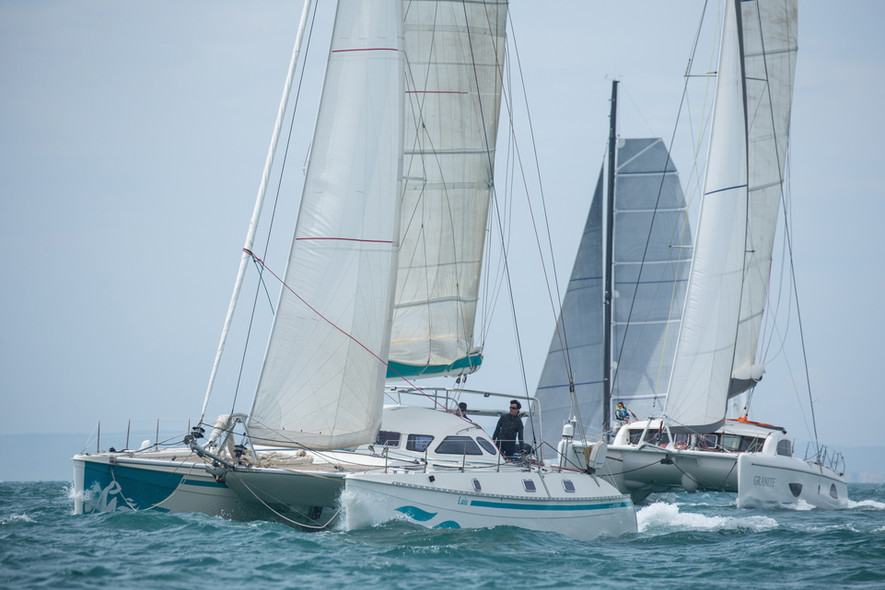
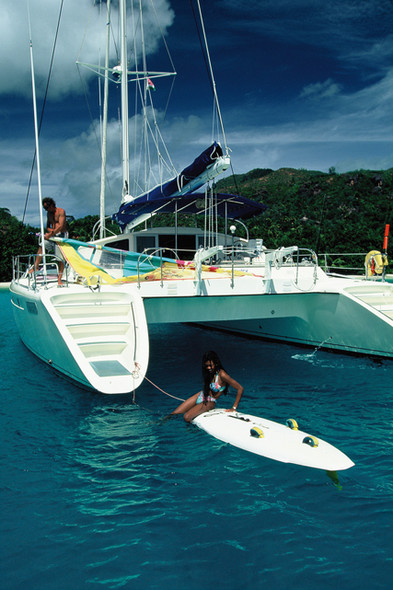
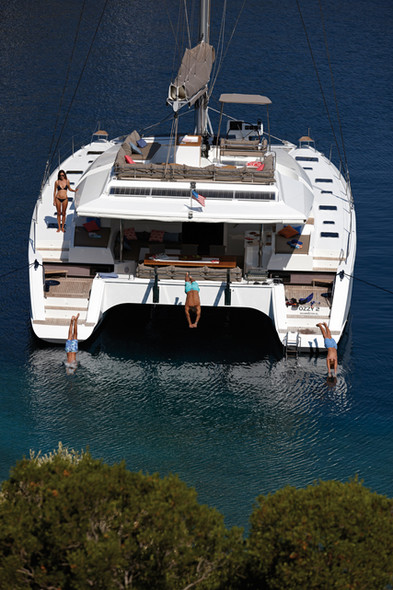
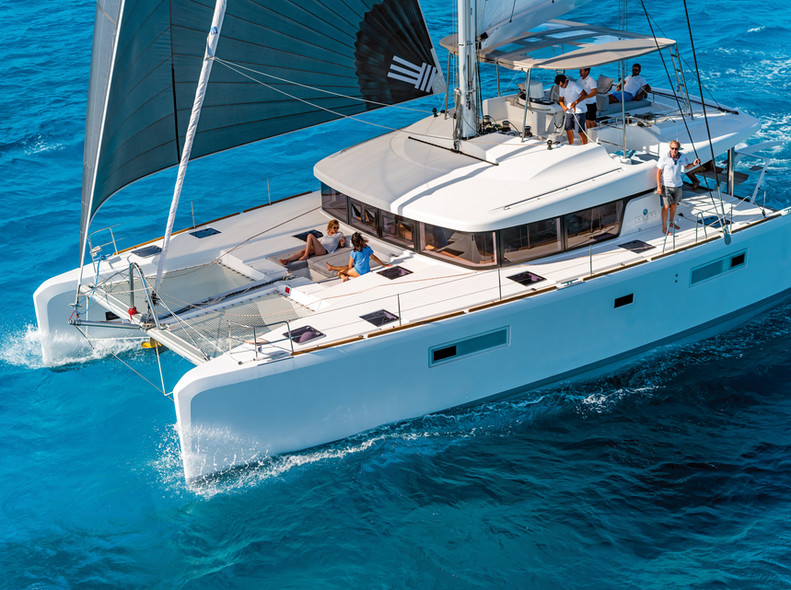
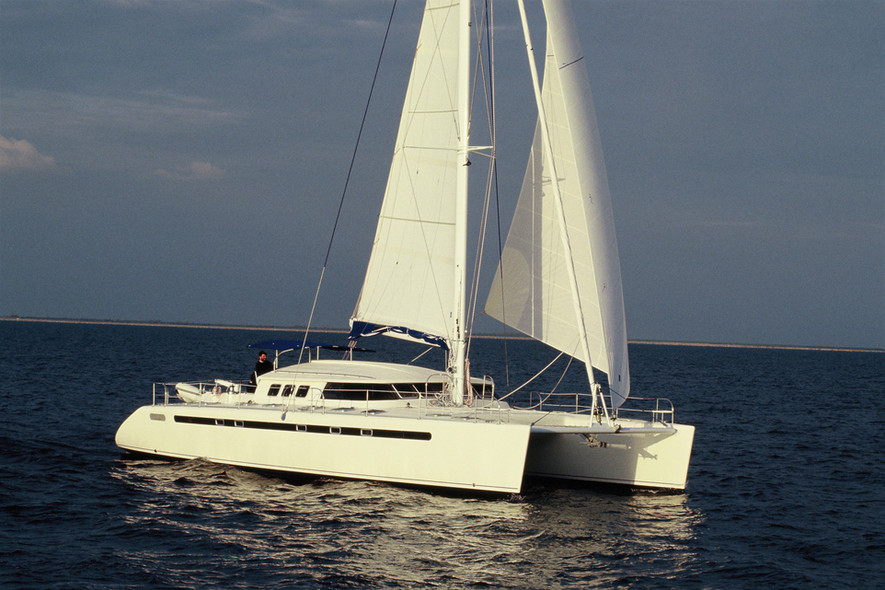
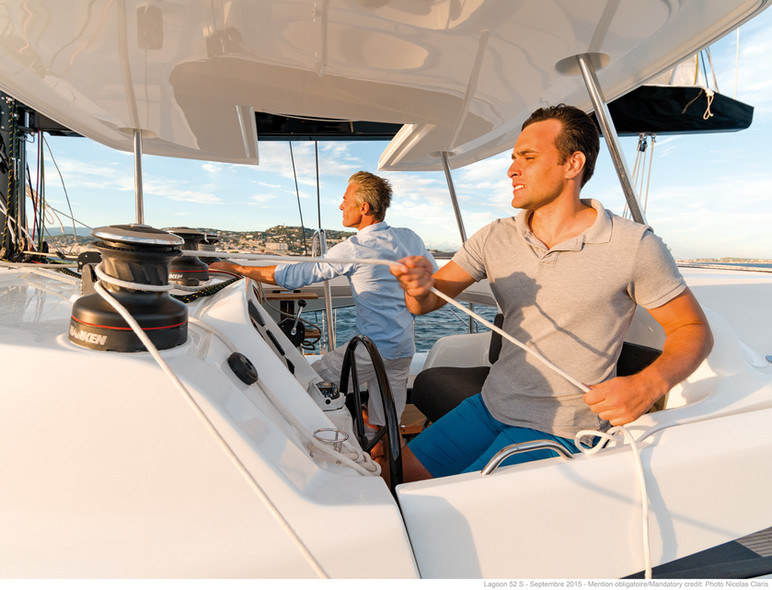
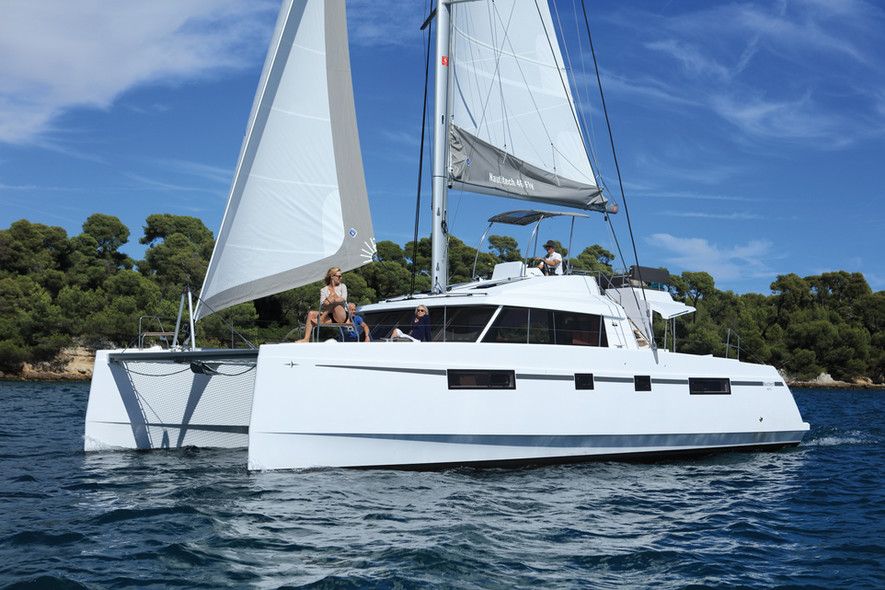
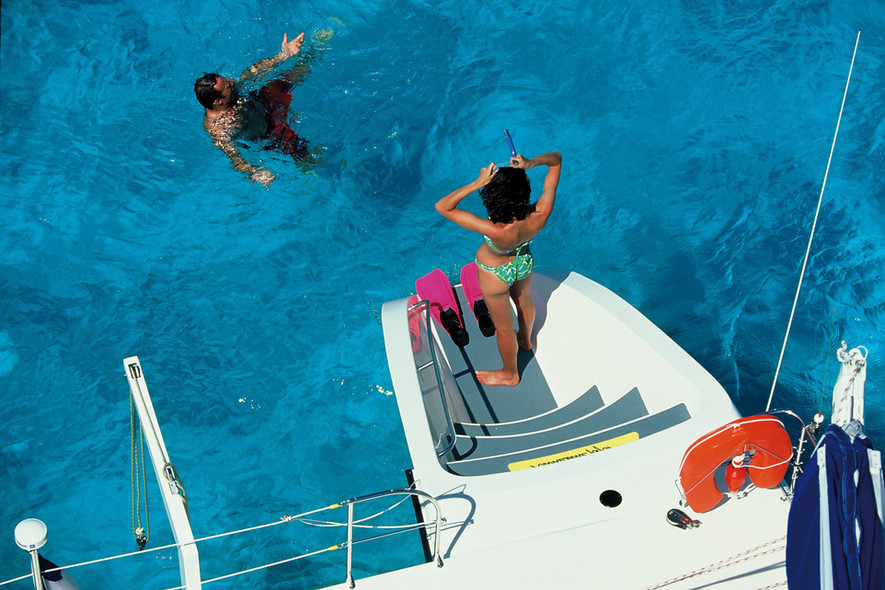
What readers think
Post a comment
No comments to show.